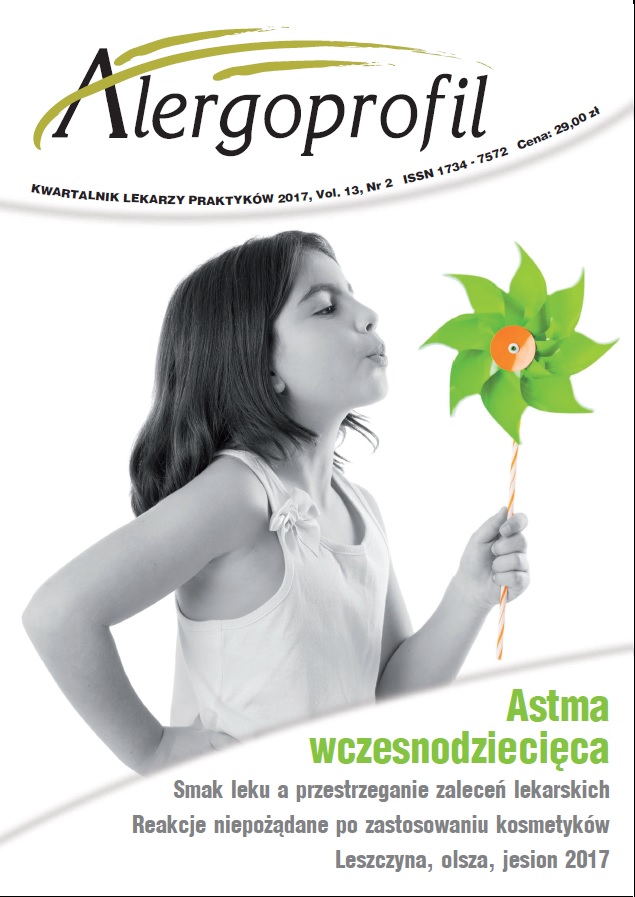Pyłek leszczyny w powietrzu północnej Polski w 2017 r.
##plugins.themes.bootstrap3.article.main##
Abstrakt
The aim of the study was to compare the pollen season of hazel in the cities of northern Poland: Bialystok, Bydgoszcz, Drawsko Pomorskie, Olsztyn, Szczecin and Warsaw in 2017. Measurements were performed by the volumetric method (Hirst type pollen sampler). Seasonal Pollen Index (SPI) was estimated as the sum of daily average pollen concentrations in the given season. Pollen season was defined as the period in which 98% of the annual total catch occurred. The pollen season of hazel started first in Bialystok, on the 6th February, and the lasted till the beginning of April. In other cities the season lasted till the end of March. The differences of pollen seasons duration ware not considerables. The highest, record airborne concentration of 221 pollen grains/m3 was noted Szczecin on the 27th February. The maximum values of seasonal pollen count occurred between of 28th February and 5th March in all cities.
Pobrania
##plugins.themes.bootstrap3.article.details##
Copyright: © Medical Education sp. z o.o. This is an Open Access article distributed under the terms of the Attribution-NonCommercial 4.0 International (CC BY-NC 4.0). License (https://creativecommons.org/licenses/by-nc/4.0/), allowing third parties to copy and redistribute the material in any medium or format and to remix, transform, and build upon the material, provided the original work is properly cited and states its license.
Address reprint requests to: Medical Education, Marcin Kuźma (marcin.kuzma@mededu.pl)
Bibliografia
2. Rapiejko P, Lipiec A, Wojdas A, Jurkiewicz D. Threshold pollen concentration necessary to evoke allergic symptoms. Int Rev Allergol Clin 2004, 10(3): 91-93.
3. Zając A, Zając M (ed.). Distribution Atlas of Vascular Plant of Poland. Pracownia Chorologii Komputerowej Instytutu Botaniki UJ, Kraków 2001.
4. Emberlin J, Savage M, Woodman R. Annual variations in the concentrations of Betula pollen in the London area 1961–1990. Grana 1993, 32: 359-363. DOI: 10.1080/00173139309428965.
5. Todea D, Suatean I, Coman AC et al. The effect of climate change and air pollution on allergenic potential of pollens. Notulae Botanicae Horti Agrobotanici Cluj-Napoca 2013, 41(2): 646-650.
6. Guedes A, Ribeiro H, Fernandez-Gonzalez M et al. Pollen Raman spectra database: Application to the identification of airborne pollen. Talanta 2014, 119: 473-478.
7. Sofiev M. On impact of transport conditions on variability of the seasonal pollen index. Aerobiologia 2017, 33: 167-179. DOI: 10.1007/s10453-016-9459-x.
8. Rapiejko P, Puc M, Malkiewicz M et al. Hazel pollen in the air of selected Polish cities in 2015. Alergoprofil 2015, 11(3): 40-44.

